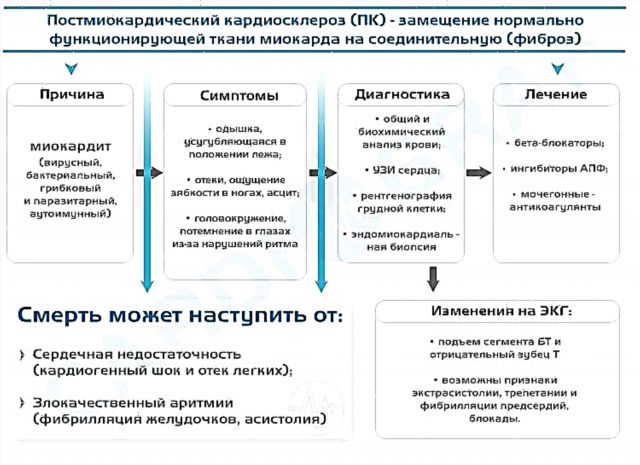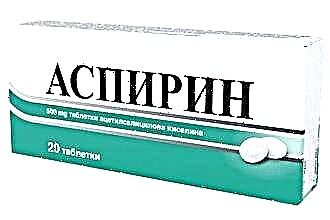Surely it is possible to determine the reason why the bridge of the nose hurts by means of an instrumental examination of the respiratory tract. In most cases, discomfort occurs due to inflammation of the paranasal sinuses, in particular the cells of the ethmoid labyrinth, the sphenoid and frontal sinuses. Infections, allergic reactions and neurological diseases can be the culprits of pathological processes.
Causes
If you have a sore bridge of your nose when pressed, first of all, you must definitely determine the cause of the discomfort. According to practical observations, burning, itching and pain in the paranasal sinuses indicate the presence of inflammation in the upper respiratory system. There may be several reasons for this:
Neuralgia
 If the bridge of the nose and head periodically hurts, it may be caused by neurological disorders. As a rule, the pains are bursting or pressing in nature. Sometimes during attacks in patients, vegetative disorders are noted - lacrimation, swelling of the nasopharyngeal mucosa and profuse nasal discharge. The most common neurological disorders include:
If the bridge of the nose and head periodically hurts, it may be caused by neurological disorders. As a rule, the pains are bursting or pressing in nature. Sometimes during attacks in patients, vegetative disorders are noted - lacrimation, swelling of the nasopharyngeal mucosa and profuse nasal discharge. The most common neurological disorders include:
- ganglionitis - inflammation of the pterygopalatine node of the sympathetic trunk, provoked by infection, metabolic disorders, injuries, etc.; accompanied by pain in the temporal and frontal region, as well as the gums and eyes;
- Charlin's syndrome - damage to the nasal nerve, which often occurs against the background of inflammation of the paranasal sinuses; with the development of the disease, patients complain of the appearance of acute bursting pain in the forehead when pressing on the bridge of the nose.
Untimely treatment of neurological disorders leads to malnutrition of the cornea of the eye, i.e. keratitis.
ENT diseases
Respiratory diseases are one of the most likely causes of discomfort in the bridge of the nose. Many people mistakenly believe that a common cold does not threaten serious complications and diseases. In fact, any inflammatory processes in the nasopharynx can provoke dangerous pathologies. If the bridge of your nose and forehead hurts for a long period, the reason for this may be:
- bacterial rhinitis - acute inflammation of the nasopharynx, provoked by pathogenic microbes; characterized by edema of the mucous membranes of the nasal cavity, and the formation of purulent foci in the nasal canals and paranasal sinuses;
- sinusitis - an infectious inflammation of the maxillary paranasal sinuses, which most often occurs as a complication of bacterial rhinitis;
- frontal sinusitis - unilateral or bilateral inflammation of the frontal sinuses, which is often accompanied by damage to the cells of the ethmoid labyrinth;
- ethmoiditis is an acute or sluggish inflammation of the ethmoid cells located at the base of the nose inside the skull.
If inflammation in the nasopharynx and paranasal sinuses is not stopped in time, this can lead to an ENT organ abscess and meningitis.
Allergic rhinitis
 Hay fever (allergic rhinitis) is a disease characterized by inflammation of the nasopharyngeal mucosa. A provocateur of the pathological process is an allergic reaction to plant pollen, dandruff, strong odors, gassed air, evaporation of paints and varnishes, etc. Due to inflammation of the nasopharynx, the outflow of mucus from the paranasal sinuses is disturbed, which can subsequently lead to their defeat.
Hay fever (allergic rhinitis) is a disease characterized by inflammation of the nasopharyngeal mucosa. A provocateur of the pathological process is an allergic reaction to plant pollen, dandruff, strong odors, gassed air, evaporation of paints and varnishes, etc. Due to inflammation of the nasopharynx, the outflow of mucus from the paranasal sinuses is disturbed, which can subsequently lead to their defeat.
The development of allergic rhinitis is evidenced by the appearance of the following symptoms:
- sneezing;
- lacrimation;
- nasal congestion;
- pain in the bridge of the nose;
- severe runny nose.
Inadequate treatment of hay fever is fraught with infectious inflammation of the nasopharyngeal mucosa and the development of sinusitis.
It should be understood that mucus accumulating in the nasal cavity is an ideal substrate for the development of bacteria. Therefore, belated and inadequate treatment of the disease can lead to the development of side pathologies - sinusitis, ethmoiditis, etc.
Treatment methods
The principles of treatment of diseases largely depend on the causes of their occurrence. As a rule, neurological pathologies are treated in a hospital under the supervision of specialists due to the high risk of complications. To eliminate pathologies of the respiratory tract, the following methods of therapy are used:
Pharmacotherapy
When undergoing drug treatment, the patient is prescribed drugs that help to eliminate inflammatory processes and restore nasal breathing. Depending on the nature of the causative agent of the infection, antibacterial or antiviral agents are included in the treatment regimen. Of the drugs with symptomatic action, the following are used:
- antihistamine tablets;
- corticosteroids;
- mucolytic agents;
- vasoconstrictor drops;
- analgesics;
- antipyretic drugs.
Only a specialist can draw up the correct treatment regimen after finding the site of localization of inflammatory processes in the nasopharynx and determining the type of ENT disease.
Timely medication can eliminate mucus from the nasal passages and sinuses and thereby reduce the likelihood of developing sinusitis. To speed up the healing process of tissues, it is recommended to resort to inhalation with compressor and ultrasonic nebulizers.
Physiotherapy
 Conservative treatment involves the use of physiotherapeutic procedures, with the help of which it is possible to clear the paranasal sinuses of mucus and pathogens. It is the hardware treatment that allows you to achieve a lasting result in the case of the development of chronic inflammation in the upper respiratory system.
Conservative treatment involves the use of physiotherapeutic procedures, with the help of which it is possible to clear the paranasal sinuses of mucus and pathogens. It is the hardware treatment that allows you to achieve a lasting result in the case of the development of chronic inflammation in the upper respiratory system.
Physiotherapy is prescribed only at the stage of regression of acute inflammation in the respiratory organs.
Only an experienced specialist can prescribe a physiotherapy treatment for sinusitis to a patient. To avoid complications, apparatus therapy (electrophoresis, phonophoresis, UHF therapy) is used at the stage of resolving pathological reactions in soft tissues. The fact is that exposure to ultrasonic and electromagnetic fields on the respiratory organs leads to a local increase in temperature. This, in turn, can provoke a relapse of inflammation and, as a result, a deterioration in the patient's well-being.
Surgery
Operative methods of treatment are used only in case of ineffectiveness of conservative therapy. As a rule, trepanopuncture is used to cleanse the paranasal sinuses from purulent masses and pathogens, during which purulent exudate is "drawn" from the frontal sinuses. The procedure is performed in two ways:
- with the help of a Kassirsky needle, a puncture is made in the bridge of the nose, through which a pathological secret is extracted from the frontal sinus;
- with the help of video endoscopic equipment, the anastomosis of the paranasal sinuses is expanded, thereby improving the outflow of pus from the areas of inflammation.
Surgical treatment is resorted to only if there is a risk of developing intracranial complications.It should be understood that delayed treatment of sinusitis is fraught with epidural abscess (inflammation of the brain tissue), meningitis, osteomyelitis (rotting of the frontal bone) and sepsis.
Features of drug treatment
Inflammation in the paranasal sinuses can be cured within a week, but only if the rules of pharmacotherapy and the recommendations of a specialist are observed. As a rule, treatment takes place in two stages:
- elimination of the causative agent of infection with the help of drugs of etiotropic action, i.e. antibiotics or antiviral agents;
- elimination of the residual symptoms of sinusitis with the help of symptomatic drugs.
To prevent the further development of the infection and eliminate the main manifestations of the disease, the following medications are included in the therapy regimen:
| Drug type | Pharmacological properties | Name of drugs |
|---|---|---|
| antibiotics | destroy the bacterial flora and eliminate purulent inflammation | "Sumamed" "Flemoxin Solutab" "Spiramycin" |
| antimicrobial nasal agents | reduce the severity of inflammation in the paranasal sinuses | "Bioparox" "Polydexa" "Isofra" |
| vasoconstrictor | reduce swelling of the nasopharynx and normalize the outflow of mucus from the paranasal sinuses | "Metazon" "Afrin" "Nazivin" |
| mucolytics | liquefy mucus in the nose and accelerate its excretion | "Fluimucil" "Mukodin" "Sinupret" |
| antihistamines | eliminate puffiness, itching and inflammation | "Feksadin" "Tavegil" "Zirtek" |
| moisturizing drops | moisturize the nasal mucosa and increase local immunity | "Salin" "Rinolux" "Aqua Maris" |
Important! Complex forms of sinusitis can be cured only under the supervision of a doctor in a hospital setting.
Relapses of the disease can be prevented by taking vitamin-mineral complexes and immunostimulating agents. In addition, doctors strongly recommend treating rhinitis immediately after the first signs of the disease appear.
Conclusion
Pain in the bridge of the nose with pressure in most cases occurs due to inflammation of the paranasal sinuses. This can be caused by infections, allergic reactions, or neurological disorders. It should be understood that even a runny nose can subsequently trigger the development of sinusitis. With inflammation of the nasal mucosa, the outflow of viscous secretion from the paranasal sinuses is disturbed. In this regard, the likelihood of inflammation of the soft and bone tissues in the mentioned anatomical structures increases. Respiratory diseases are treated with mucolytic, antibacterial, anti-inflammatory and wound-healing drugs. At the stage of resolving inflammatory reactions, it is recommended to resort to physiotherapeutic procedures - UHF therapy, phonophoresis, etc. If medical and physiotherapeutic treatment does not give the desired results, patients undergo trepanopuncture, due to which purulent exudate is removed from the paranasal sinuses.



